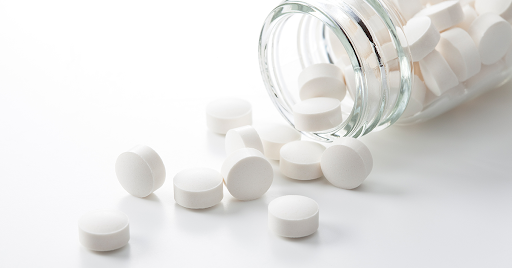Does Gabapentin Help with Sciatica?
Sciatica can cause sharp pain that shoots down your leg, making simple tasks hard. Many people wonder if gabapentin, a common medication, can ease this pain. This article [...]
Read More
Medically reviewed by Abhijit Bhattacharyya | MD, PhD, MBA, Tufts University School of Medicine - Miami, Florida on June 13th, 2025.
The liver is a vital organ responsible for numerous functions, including detoxification, metabolism, and protein production. When something goes wrong with the liver, it can lead to discomfort or pain. Understanding what liver pain feels like and where it is located can help individuals recognize potential health issues and seek appropriate medical attention. This article explores the nature, causes, and implications of liver pain to help readers take proactive steps toward better liver health.
 Understanding Liver Pain
Understanding Liver PainLiver pain is often described as a vague discomfort in the upper right quadrant of the abdomen. However, the sensation can vary significantly depending on the underlying cause. It is crucial to understand that the liver itself does not have pain receptors, so pain is typically referred from surrounding structures or due to inflammation, swelling, or other pathological changes. This complexity can make it challenging to pinpoint the exact source of discomfort, leading many to seek medical advice for a thorough evaluation.
Liver pain can manifest in several ways, making it essential to recognize its characteristics:
Dull and Aching: Many individuals report a dull, aching sensation that can be persistent.
Sharp or Stabbing: In some cases, the pain may be sharp or stabbing, especially if there is an acute condition.
Radiating Pain: Liver pain may radiate to the right shoulder or back, complicating the diagnosis.
These sensations can be accompanied by other symptoms, which can provide further insight into the underlying issue. For instance, individuals may also experience nausea, fatigue, or changes in appetite, which can all signal that the liver is under duress. Additionally, the presence of jaundice, characterized by yellowing of the skin and eyes, can indicate more severe liver dysfunction, necessitating immediate medical attention.
Several conditions can lead to liver pain, including:
Hepatitis: Inflammation of the liver due to viral infections, alcohol use, or autoimmune diseases.
Fatty Liver Disease: Accumulation of fat in liver cells, which can cause inflammation and pain.
Liver Cirrhosis: Scarring of the liver tissue, often resulting from long-term damage.
Liver Tumors: Both benign and malignant tumors can cause discomfort in the liver area.
Identifying the underlying cause is crucial for effective treatment and management. For example, hepatitis can be viral, autoimmune, or drug-induced, each requiring a different therapeutic approach. Similarly, fatty liver disease can be associated with metabolic syndrome, necessitating lifestyle modifications such as dietary changes and increased physical activity. Understanding these nuances not only aids in diagnosis but also empowers patients to take an active role in their health management, fostering a collaborative relationship with healthcare providers.
To understand liver pain better, it is essential to know its precise location. The liver is situated in the upper right quadrant of the abdomen, just beneath the rib cage. However, pain may not always be localized to this area. The liver is a vital organ responsible for various functions, including detoxification, metabolism, and the production of essential proteins. Therefore, any discomfort in this region can signal underlying issues that may require medical attention.
When assessing liver pain, consider the following:
Upper Right Abdomen: The most common area where liver pain is felt.
Right Shoulder: Pain may radiate to the right shoulder due to nerve pathways.
Back Pain: Some individuals may experience discomfort in the upper back.
Understanding these locations can aid in distinguishing liver pain from other abdominal discomforts. It's important to note that liver pain can sometimes be mistaken for gallbladder issues or even heart-related problems, which is why recognizing the specific characteristics of the pain is crucial. For instance, liver pain is often described as a dull, persistent ache, whereas gallbladder pain may present as sharp and sudden.
To better visualize liver pain, it can be helpful to consider the anatomical position of the liver:
Upper Right Quadrant
Primary area of liver pain, often described as a dull ache.
Right Shoulder
Pain may radiate here due to shared nerve pathways.
Upper Back
Some may feel discomfort in the upper back region.
In addition to these common pain locations, individuals may also experience symptoms such as fatigue, jaundice, or changes in appetite, which can further indicate liver issues. For example, jaundice, characterized by yellowing of the skin and eyes, occurs when the liver is unable to process bilirubin effectively. This can be a critical indicator that the liver is under stress or compromised in its function, necessitating a thorough evaluation by a healthcare professional. Understanding these symptoms in conjunction with pain location can provide a more comprehensive view of one's liver health.
Liver pain often does not occur in isolation. Various symptoms may accompany it, providing critical clues about the underlying condition. The liver, being a vital organ responsible for numerous functions, can exhibit signs of distress that manifest in multiple ways throughout the body.
Individuals experiencing liver pain may also notice:
Jaundice: Yellowing of the skin and eyes, indicating liver dysfunction.
Fatigue: A general feeling of tiredness that does not improve with rest.
Changes in Appetite: Loss of appetite or unintentional weight loss.
Nausea and Vomiting: Digestive disturbances can occur alongside liver issues.
These symptoms can help healthcare providers make a more accurate diagnosis and determine the best course of action. Additionally, individuals may experience abdominal swelling or discomfort, often attributed to fluid accumulation in the abdomen, known as ascites. This condition can lead to increased pressure in the abdominal cavity, causing further discomfort and potentially complicating the clinical picture. Furthermore, some may notice a change in the color of their urine, which can appear darker than usual, a sign that the liver is not processing waste effectively.
Recognizing when to seek medical help is crucial for liver health. Consider the following scenarios:
If liver pain is severe and persistent.
Accompanied by jaundice or significant changes in skin color.
If there are signs of bleeding or bruising.
Experiencing confusion or changes in mental status.
Prompt medical evaluation can lead to early diagnosis and treatment, which is essential for managing liver-related conditions. It is also important to be aware of other potential warning signs, such as itchy skin or an unusual rash, which may indicate bile salt accumulation in the bloodstream.
If you're unsure whether your symptoms are liver-related, use Doctronic.ai for a fast, AI-powered symptom check and medical guidance—available 24/7 and accessible from your phone.
Diagnosing the cause of liver pain typically involves a combination of medical history, physical examination, and diagnostic tests.
A thorough medical history is essential. Healthcare providers will ask about:
Duration and intensity of pain.
Associated symptoms.
Alcohol consumption and medication use.
Family history of liver disease.
A physical examination may reveal tenderness in the upper right abdomen, which can help pinpoint the issue. Additionally, the healthcare provider may check for signs of liver disease, such as jaundice (yellowing of the skin and eyes), ascites (fluid accumulation in the abdomen), or spider angiomas (small, spider-like blood vessels visible on the skin). These observations can provide critical clues regarding the liver's condition and overall health.
Several tests may be employed to diagnose liver conditions:
Blood Tests: Liver function tests can assess the health of the liver.
Imaging Studies: Ultrasound, CT scans, or MRIs can provide visual insights into liver structure.
Liver Biopsy: In some cases, a biopsy may be necessary to determine the extent of liver damage.
These tests can help identify the underlying cause of liver pain and guide treatment options. In addition to these standard tests, healthcare providers may also consider specialized tests such as hepatitis virus panels to check for viral infections or tests for autoimmune liver diseases. Genetic testing might also be indicated in certain cases, particularly if there is a suspicion of hereditary conditions like hemochromatosis or Wilson's disease. Each of these diagnostic tools plays a vital role in creating a comprehensive picture of liver health, allowing for targeted and effective management of any identified issues.
The treatment for liver pain largely depends on the underlying cause. Here are some common approaches:
Depending on the diagnosis, various medications may be prescribed:
Antivirals: For viral hepatitis, antiviral medications may be necessary.
Corticosteroids: These can help reduce inflammation in autoimmune liver diseases.
Pain Relievers: Over-the-counter pain relievers may be recommended for symptom management.
It is essential to follow a healthcare provider's recommendations regarding medication use. In some cases, more advanced treatments such as immunosuppressants may be indicated, particularly for patients with autoimmune hepatitis. Additionally, regular monitoring of liver function through blood tests is crucial to assess the effectiveness of the treatment and make necessary adjustments. Patients should also be aware of potential side effects associated with these medications, which can sometimes complicate treatment.
 Lifestyle Changes
Lifestyle ChangesIn addition to medications, making lifestyle changes can significantly impact liver health:
Diet: A balanced diet rich in fruits, vegetables, and whole grains can support liver function.
Exercise: Regular physical activity can help maintain a healthy weight and reduce liver fat.
Avoiding Alcohol: Reducing or eliminating alcohol consumption is crucial for liver health.
Implementing these changes can help alleviate symptoms and improve overall liver function. Furthermore, incorporating foods high in antioxidants, such as berries and leafy greens, can provide additional support to the liver by combating oxidative stress. Staying hydrated is also vital; drinking plenty of water aids in detoxification processes and helps maintain optimal liver function. Engaging in stress-reducing activities, such as yoga or meditation, can also contribute to better liver health, as chronic stress can exacerbate inflammation and other liver-related issues.
Taking proactive steps to maintain liver health can help prevent liver pain and associated conditions.
Routine check-ups with a healthcare provider can help monitor liver health, especially for individuals at higher risk:
Those with a family history of liver disease.
Individuals with chronic conditions like diabetes or obesity.
People who consume alcohol regularly.
Early detection of liver issues can lead to more effective management and treatment. During these check-ups, healthcare providers may conduct blood tests to assess liver enzyme levels, which can indicate inflammation or damage. Additionally, imaging tests such as ultrasounds can provide a visual assessment of liver structure and function, allowing for a comprehensive evaluation of liver health.
Vaccination against hepatitis A and B can provide protection against viral infections that can harm the liver. Additionally, practicing safe behaviors, such as:
Using protection during sexual activity.
Avoid sharing needles or personal items that may be contaminated.
These measures can significantly reduce the risk of liver diseases. Furthermore, it's essential to stay informed about potential outbreaks and vaccination recommendations, especially for those who travel frequently or work in high-risk environments. Engaging in community health initiatives that promote vaccination can also foster a culture of safety and awareness, ultimately leading to improved liver health on a broader scale.
Liver pain can be subtle or severe, but it always warrants attention—especially when paired with fatigue, jaundice, or abdominal changes. Because of the liver's critical role in overall health, recognizing early signs and taking prompt action can make a significant difference.
Need help interpreting your symptoms or deciding what to do next? Doctronic.ai provides fast, personalized health insights based on real medical knowledge, available 24/7 to support your well-being.
Sciatica can cause sharp pain that shoots down your leg, making simple tasks hard. Many people wonder if gabapentin, a common medication, can ease this pain. This article [...]
Read MoreBack pain is one of the most common health complaints, affecting millions of people worldwide. If you have back pain, you might have heard about gabapentin as a possible [...]
Read MoreIf you take gabapentin, you might wonder if it will show up on a drug test. This question matters for many people, whether it’s for work, sports, or legal reasons. Gabapentin [...]
Read More